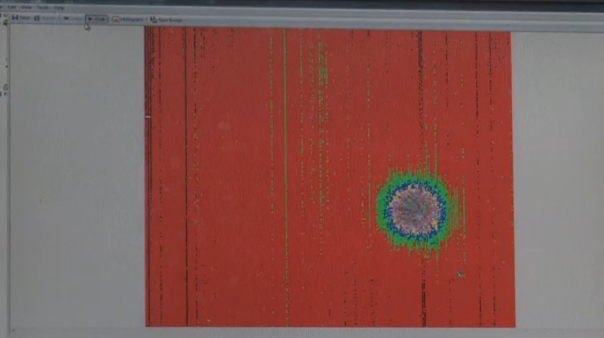
EINDHOVEN, Netherlands (Reuters) — Eindhoven University of Technology (TU/e) researchers say their new wireless network based on harmless infrared rays will mark a sea change in WiFi delivery if rolled out globally.
Researcher Joanne Oh and professor of broadband communication technology Ton Koonen have devised a system in which wireless data is delivered by central ‘light antennas’.
A wavelength demultiplexing unit separates individual wavelengths coming from a laser into multiple separate fibres, each of which can generate an infrared beam.
“We are using rays of light which convey the information in a wireless way, with each ray acting as a very high capacity channel. It’s the same as an optical fiber without needing the fibre,” Koonen told Reuters.
Current Wi-Fi uses radio signals with a frequency of 2.5 or 5 gigahertz. By comparison, Oh and Koonen’s system uses infrared light with wavelengths of 1500 nanometers and higher, with very precisely directed rays of light supplied by an optical fibre. This light has frequencies that are thousands of times higher, some 200 terahertz.
“We have achieved data transfer at 112 gigabits per second. A high-definition DVD disc, has roughly five gigabytes of information, which means 40 gigabits,” said Koonen.
In computing power, a bit is eight times smaller than a byte, which means a gigabit is eight times smaller than a gigabyte.
“At our speed we could almost transmit three of these DVDs within a second, within a single beam of light,” he added.
Each antenna contains two gratings that radiate light rays of different wavelengths at different angles. Changing wavelengths alters the direction of the ray of light.
Another Wifi alternative, known as LiFi, uses the visible light of the electromagnetic spectrum to turn LED lights into internet transmitters. But according to Koonen, “all the devices inside the room have to share the capacity of a single LED lamp. In our case we use a lot of infrared invisible beams and each conveys high-speed data at a rate of up to 112 gigabits per second.”
The system is safe, because infrared wavelengths do not reach the user’s most sensitive part of the eye – the retina – and with no need for moving parts, the system is maintenance-free and requires no power.
If a user walks around and their smartphone or tablet moves out of the light antenna’s line of sight, another antenna takes over, the network tracking the exact location of every wireless device using a two-way radio signal.
“We offer unshared capacity to each individual user. As you only get a beam if you need the traffic, we’re not illuminating the whole place for a single user, so it’s much more power efficient. Also light doesn’t go through walls, so your communication is confined to one room. Nobody can listen in from outside, so it offers a lot of security.”
For demonstration purposes the team fed a single yellow fibre from the wavelength demultiplexing unit to a mounted camera lense to visualize the infrared rays of light.
The device was created under the auspices of the wider BROWSE project headed up by Koonen, with funding from the European Research Council.
The technology could be widespread within five years, thinks Koonen, with the first likely connected devices being high data consumers like video monitors, laptops or tablets.







